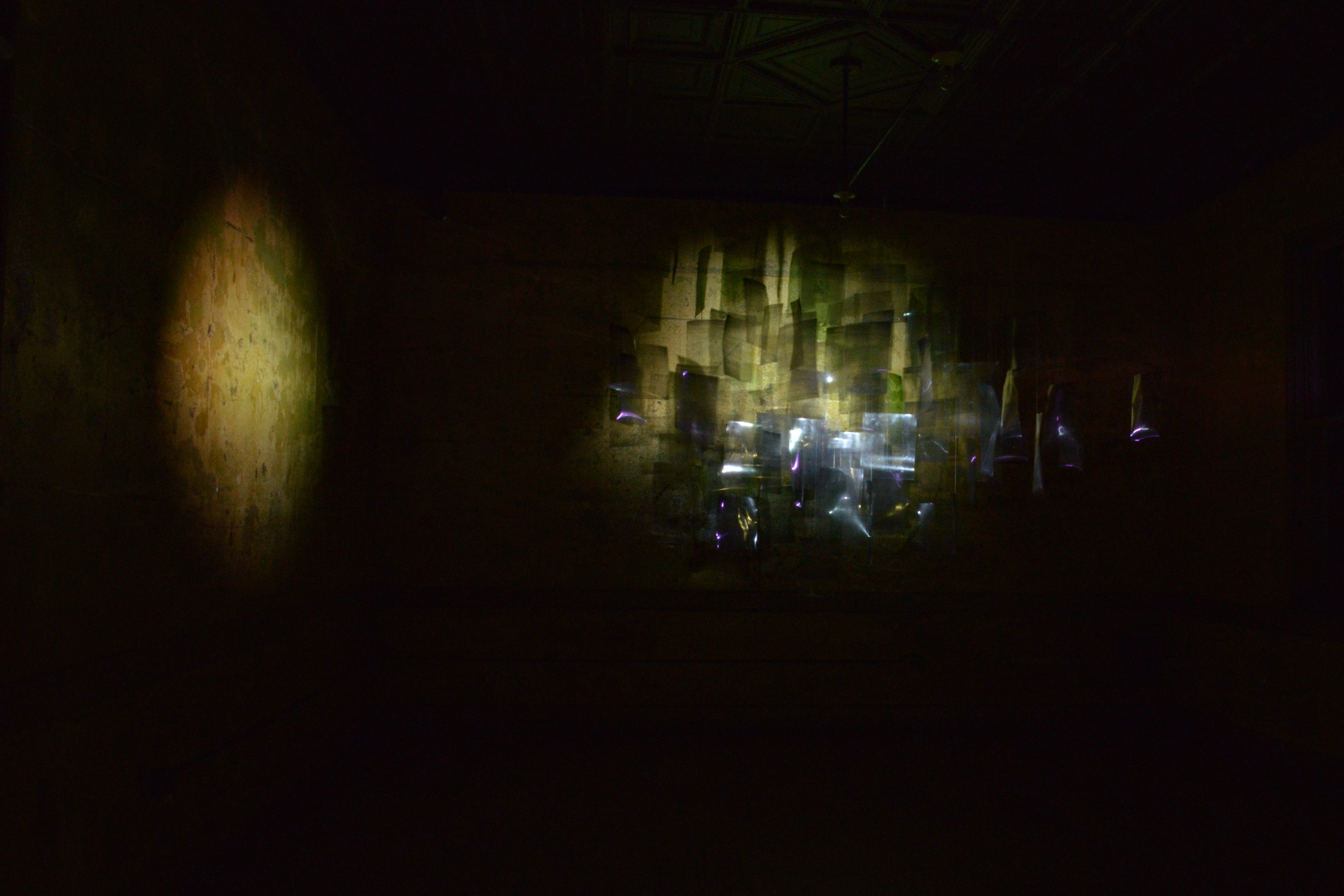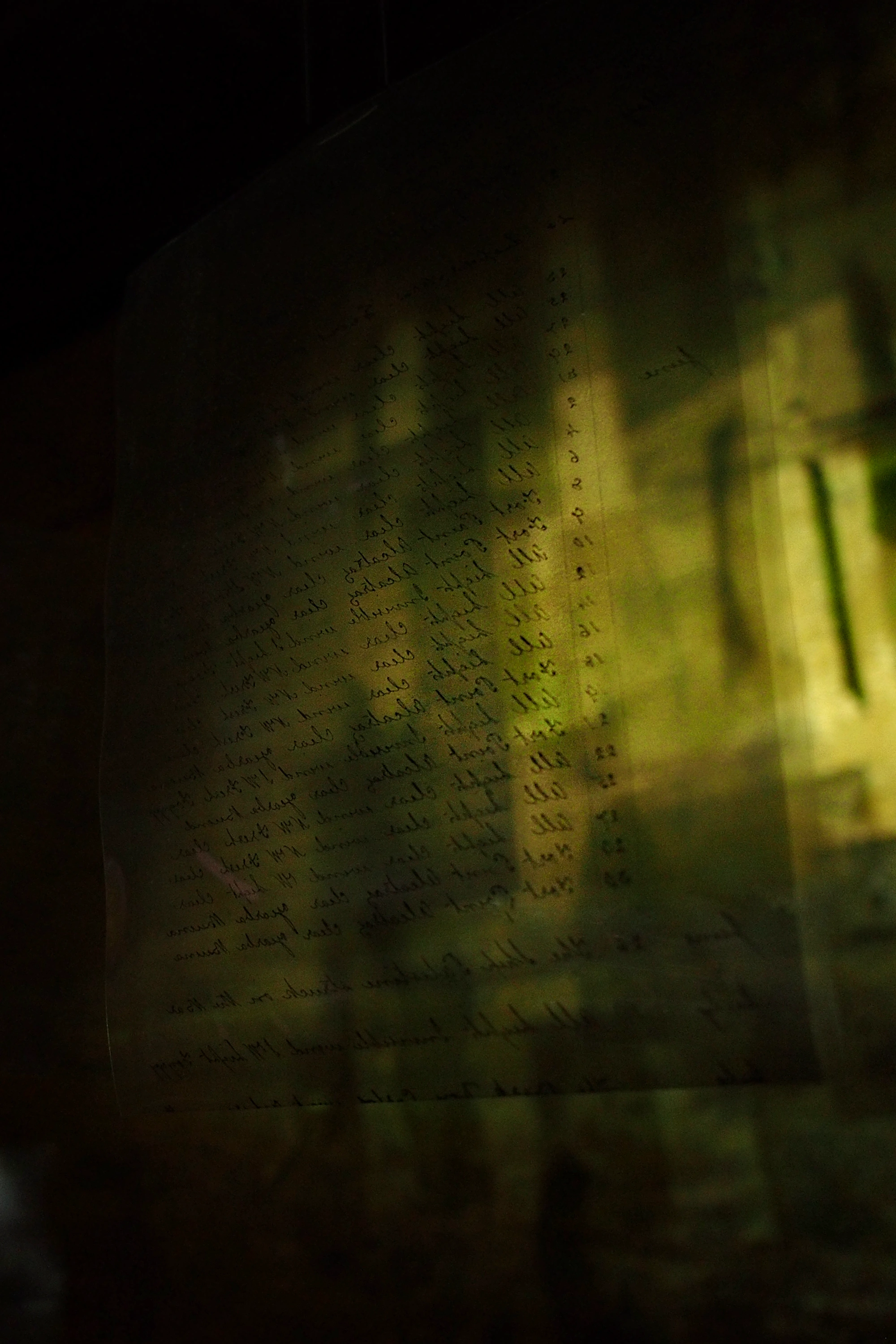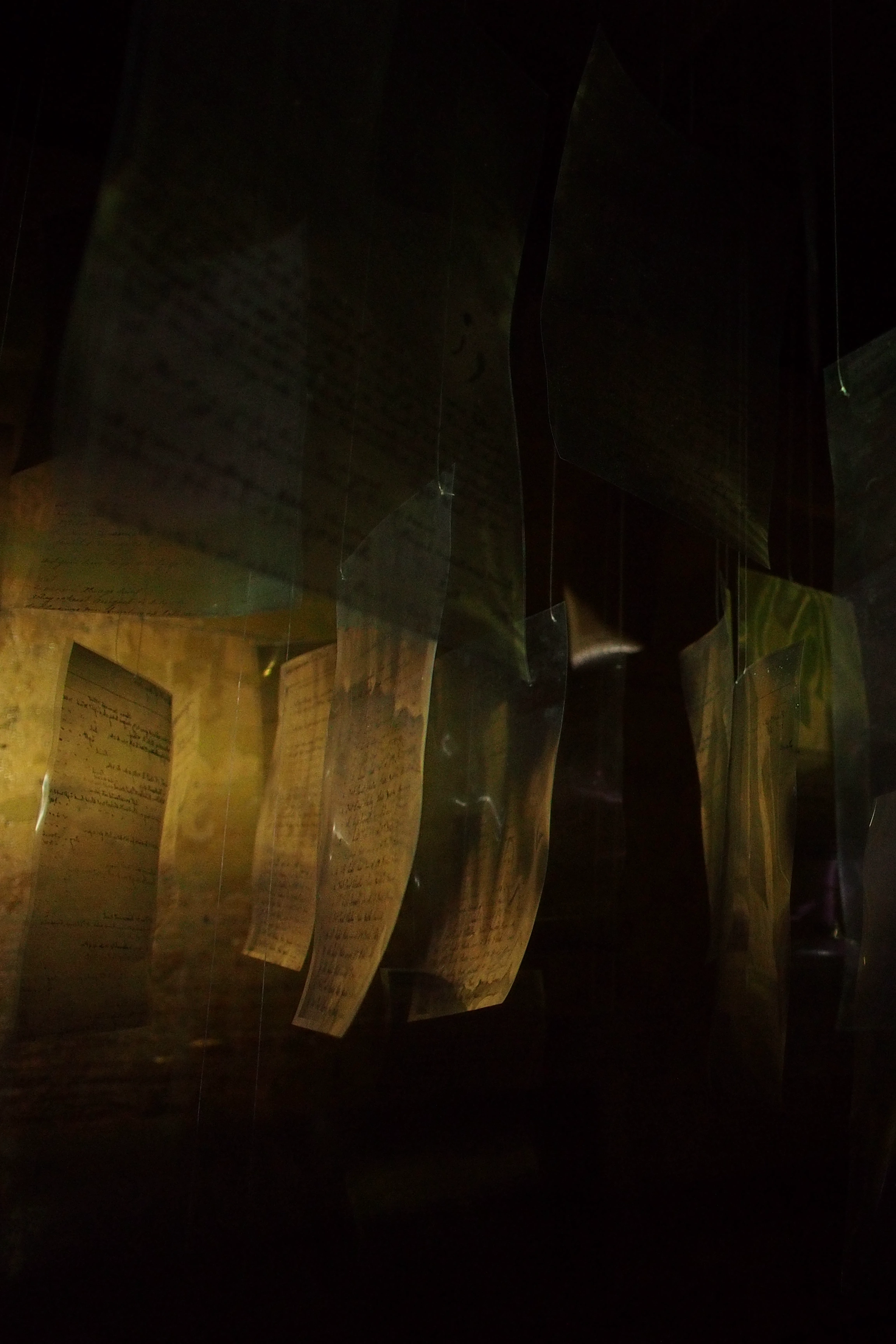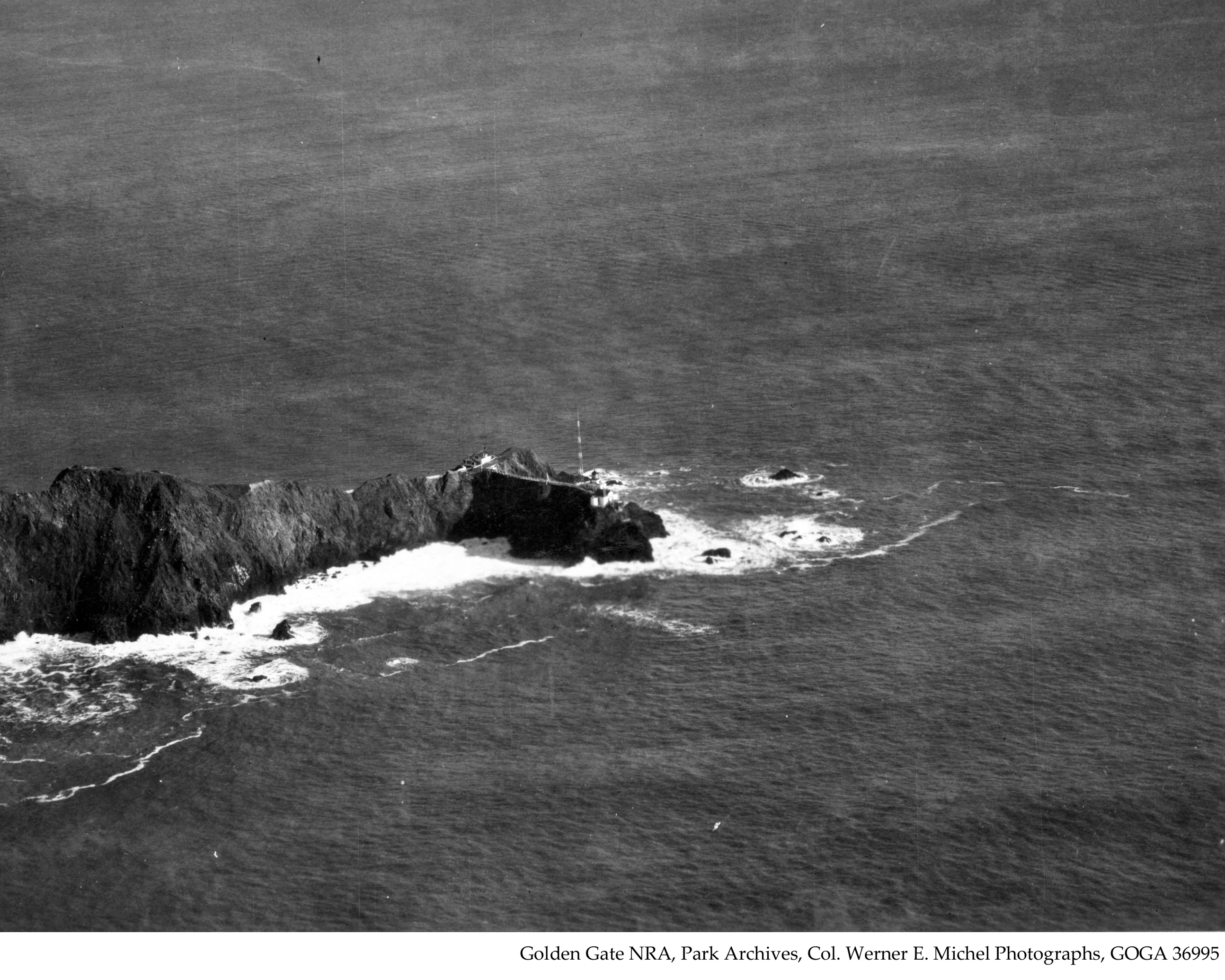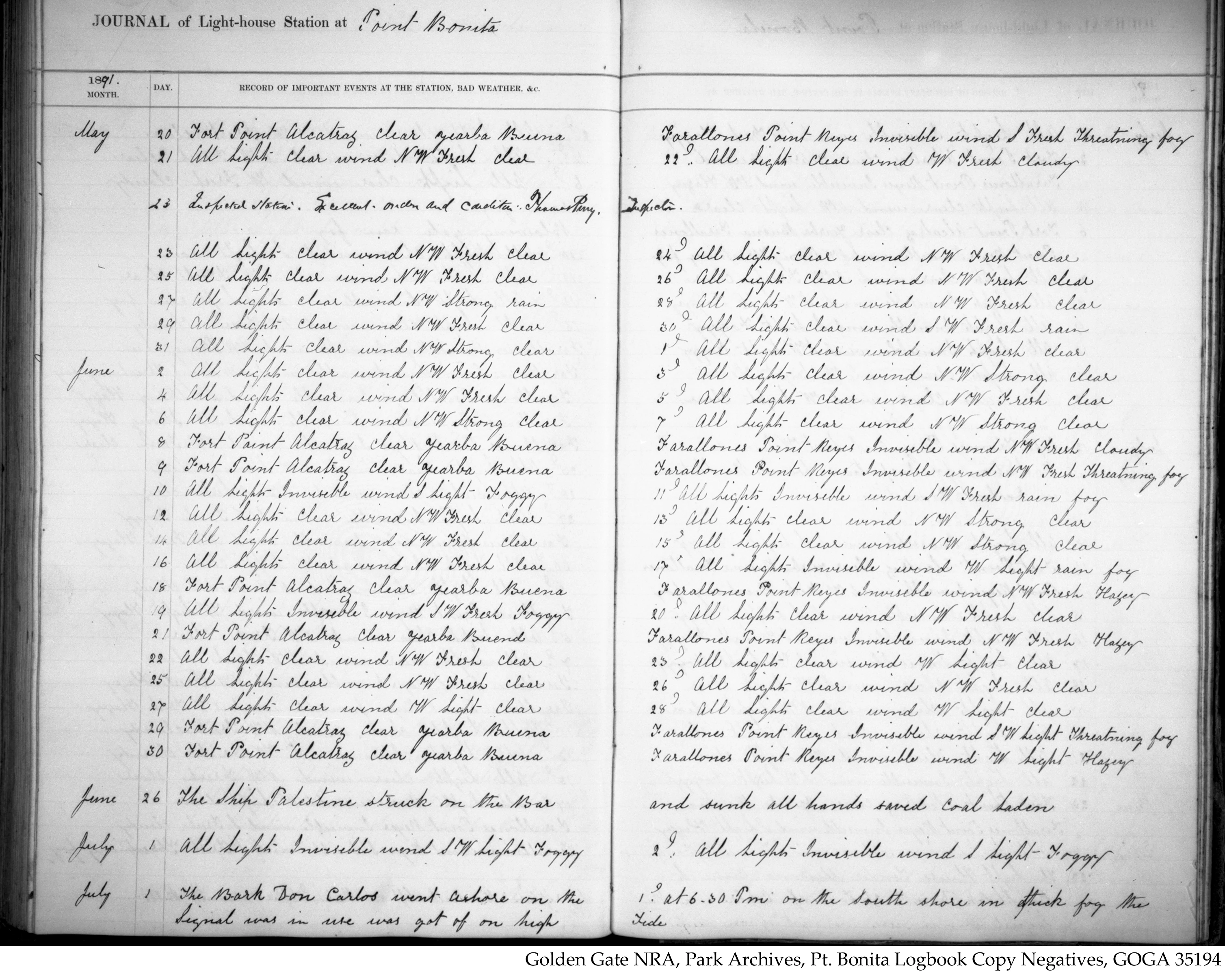Notes of the Lighthouse Keeper (Lighthouse Bonita)
Ewa Wes (Wesolowska) and Tan Wei Keong
All lights Clear wind NW Fresh Clear
All lights Clear wind NW Fresh Clear
All lights Clear wind NW Strong Clear
All lights Clear wind NW Fresh Clear
All lights Clear wind NW Strong Clear
All lights Clear wind NW Fresh Clear
All lights Clear wind NW Fresh Clear
All lights Clear wind NW Strong Clear
Fort Point Alcatraz Clear Yerba Buena
Fort Point Alcatraz Clear Yerba Buena
All Lights Invisible wind S light Foggy
All Lights Clear wind NW fresh Clear
All Lights Clear wind NW fresh Clear
All lights Clear wind NW Fresh Clear
Fort Point Alcatraz Clear Yerba Buena
All lights Invisible wind SW Fresh Foggy
Fort Point Alcatraz Clear Yerba Buena
All lights Clear wind NW Fresh Clear
All lights Clear wind NW Fresh Clear
All lights Clear wind NW Light Clear
Fort Point Alcatraz Clear Yerba Buena
Fort Point Alcatraz Clear Yerba Buena
Monotonous, mantra-like daily notes from a Lighthouse Bonita keeper’s journal (1890–1891) were printed on transparent cards and suspended from the ceiling of the Headlands Art Center’s iconic yellow Rodeo Room. A small fan in the corner of the room created a gentle breeze, causing the suspended pieces to move.
Two circular video projections, composed of time-lapse photographs of the ocean taken from the Bay Area, were cast onto the cards. Their light cast shadows of letters slowly drifting across the walls. The videos faded in and out rhythmically every few seconds, evoking the sensation of viewing the ocean through the slow motion of closing and opening eyelids.
The installation was inspired by the research paper “Time Adaptation Shows Duration Selectivity in the Human Parietal Cortex“ (2015), which explores how the human brain adapts to repeated exposure to specific time intervals. The study reveals that the parietal cortex, particularly the inferior parietal lobule (IPL), demonstrates selectivity to these durations, influencing our perception of time. This adaptation alters how we experience temporal frequency, creating an elastic sense of time that can feel condensed or expanded depending on prior stimuli. Notably, the research highlights a key distinction: while temporal repetition produces neural adaptation in the IPL, repetition of non-temporal aspects of a stimulus, such as shape, does not. This finding emphasizes the unique neural processes underlying time perception, which are echoed in the mantra-like journal entries and the interplay of fluid, shifting projections and shadows within the installation, creating a meditative yet dynamic exploration of repetition and time.
Installation
Two time-lapse video projections
50 Suspended A4 prints on foils
Headlands Center for the Arts Sausalito, Ca, USA, 2016
References:
Hayashi MJ, Ditye T, Harada T, et al. Time Adaptation Shows Duration Selectivity in the Human Parietal Cortex
Notes of the Lighthouse Keeper (Lighthouse Bonita)
Ewa Wes (Wesolowska) and Tan Wei Keong
Installation
Two time-lapse video projections
50 Suspended A4 prints on foils
Headlands Center for the Arts Sausalito, Ca, USA, 2016
All lights Clear wind NW Fresh Clear
All lights Clear wind NW Fresh Clear
All lights Clear wind NW Strong Clear
All lights Clear wind NW Fresh Clear
All lights Clear wind NW Strong Clear
All lights Clear wind NW Fresh Clear
All lights Clear wind NW Fresh Clear
All lights Clear wind NW Strong Clear
Fort Point Alcatraz Clear Yerba Buena
Fort Point Alcatraz Clear Yerba Buena
All Lights Invisible wind S light Foggy
All Lights Clear wind NW fresh Clear
All Lights Clear wind NW fresh Clear
All lights Clear wind NW Fresh Clear
Fort Point Alcatraz Clear Yerba Buena
All lights Invisible wind SW Fresh Foggy
Fort Point Alcatraz Clear Yerba Buena
All lights Clear wind NW Fresh Clear
All lights Clear wind NW Fresh Clear
All lights Clear wind NW Light Clear
Fort Point Alcatraz Clear Yerba Buena
Fort Point Alcatraz Clear Yerba Buena
Monotonous, mantra-like daily notes from a Lighthouse Bonita keeper’s journal (1890–1891) were printed on transparent cards and suspended from the ceiling of the Headlands Art Center’s iconic yellow Rodeo Room. A small fan in the corner of the room created a gentle breeze, causing the suspended pieces to move.
Two circular video projections, composed of time-lapse photographs of the ocean taken from the Bay Area, were cast onto the cards. Their light cast shadows of letters slowly drifting across the walls. The videos faded in and out rhythmically every few seconds, evoking the sensation of viewing the ocean through the slow motion of closing and opening eyelids.
The installation was inspired by the research paper “Time Adaptation Shows Duration Selectivity in the Human Parietal Cortex“ (2015), which explores how the human brain adapts to repeated exposure to specific time intervals. The study reveals that the parietal cortex, particularly the inferior parietal lobule (IPL), demonstrates selectivity to these durations, influencing our perception of time. This adaptation alters how we experience temporal frequency, creating an elastic sense of time that can feel condensed or expanded depending on prior stimuli. Notably, the research highlights a key distinction: while temporal repetition produces neural adaptation in the IPL, repetition of non-temporal aspects of a stimulus, such as shape, does not. This finding emphasizes the unique neural processes underlying time perception, which are echoed in the mantra-like journal entries and the interplay of fluid, shifting projections and shadows within the installation, creating a meditative yet dynamic exploration of repetition and time.
References:
Hayashi MJ, Ditye T, Harada T, et al. Time Adaptation Shows Duration Selectivity in the Human Parietal Cortex
